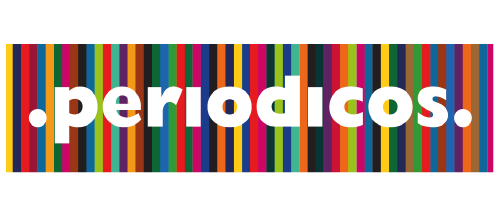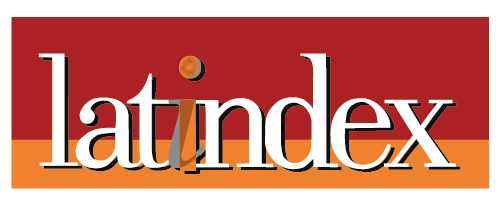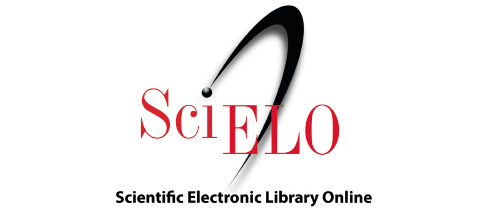ESPÉCIES VEGETAIS FITOTERÁPICAS ESSENCIAIS NO BRASIL: ECONOMIA, LEGISLAÇÃO E ASPECTOS CLÍNICO-FARMACOLÓGICOS
DOI:
https://doi.org/10.7447/1678-0493.2023v3n1p75-97Palabras clave:
Mercado de Fitoterápicos, Fitofármacos, Política Nacional de Plantas Medicinais e FitoterápicosResumen
O Brasil agrega potencial para o desenvolvimento de fitoterapias, pois detém a maior diversidade vegetal e social do mundo. O uso de plantas medicinais foi atrelado aos saberes ancestrais e à projeção tecnológica, a fim de validar cientificamente tais conhecimentos. Mas apesar do país concentrar cerca de 50% da biodiversidade mundial, maior manancial de água doce e o bioma caatinga exclusivo, questões políticas e burocráticas impedem a geração de patentes de medicamentos complementares obtidos via recursos naturais, fato que desestimula gastos com pesquisas clínicas randomizadas à obtenção de produtos comprovadamente seguros e eficazes no setor. O objetivo deste artigo foi discorrer sobre as espécies vegetais disponíveis no mercado de fitoterápicos brasileiro listadas na Relação Nacional de Medicamentos Essenciais (RENAME) e seus aspectos clínico-farmacológicos, discutindo a economia e legislação pertinente do setor. O presente estudo diz respeito a uma revisão sistemática da literatura cuja busca de artigos documentais, de revisão sistemática e ensaios clínicos se deu nas bases Biblioteca Virtual em Saúde, Science Direct , PubMed e Google Scholar, bem como pesquisas na legislação pertinente ao escopo do órgão federal vigente, a Agência Nacional de Vigilância Sanitária, nos idiomas Português, Inglês ou Espanhol, datados do período de 2017 a 2022, exceto para a legislação em vigor. O Ministério da saúde gerou ações como a Portaria Nº 212 de 11 de setembro de 1981, que definiu o estudo das plantas medicinais. A prospecção dos medicamentos fitoterápicos no Brasil resultou em um total de 12 espécies catalogadas oficialmente junto ao RENAME, sendo elas Aloe vera, Cyanara scolymus, Glycine max, Harpagophytum procumbens, Maytenus officinalis, Mentha x piperita, Mikania glomerata, Plantago ovata, Rhamnus purshiana, Salix alba, Schinus terebinthifolius e Uncaria tomentosa. Em sua maioria, os medicamentos fitoterápicos são administrados por meio de cápsulas e são numerosas as espécies com ação anti-inflamatória. A Fitoterapia foi implantada e normatizada no ano de 1988, quando aconteceu a Comissão Nacional Interministerial de Planejamento e Coordenação (CIPLAN). Uma vez criadas a Lista Nacional de Plantas Medicinais e Fitoterápicos (RENAFITO), em 2008, e a Lista Nacional de Plantas Medicinais de Interesse do SUS (RENISUS), em 2009, as denominadas Farmácias Vivas (que são instituições da rede pública brasileira de saúde destinadas ao plantio, processamento e distribuição de fitoterápicos) puderam ser implementadas e cooperaram para que o Brasil se sobressaísse no âmbito latino-americano acerca de fatos relacionados a fitoterapia. Atualmente, a Ásia-Pacífico lidera a comercialização de fitoterápicos, e tende a manter-se na mesma posição, enquanto que a Europa tende a crescer, com destaque para a Alemanha. Os dois fatores primordiais para o impulso de tal crescimento diz respeito ao baixo custo em comparação com os medicamentos sintéticos e a ausência de aditivos químicos artificiais. Assim, estima-se que até 2030, 550 bilhões de dólares americanos serão gerados através do comércio de fitoterápicos ao redor do mundo, isso devido a taxa de crescimento anual avaliada em até 18,9% o que implica no crescente interesse global em investir no setor. Conclui-se que o Brasil tem mostrado avanços nas últimas décadas no que tange à regulamentação da fitoterapia e sua aceitação como estratégia terapêutica disponível no SUS. Todavia, tal progresso ainda é tímido, pois apenas três das doze espécies fitoterápicas da RENAME são autóctones, fato que denuncia uma negligencia das indústrias brasileiras e da federação no que tange o investimento biotecnológico em espécies brasileiras.
Citas
ARAGÓN, L.E. A dimensão internacional da Amazônia: um aporte para a sua interpretação. Revista Nera, ano 21, n.42, p. 14-33, 2018.
ALVES JUNIOR, A. da S.; MELO, ES de P.; GONDIM, JM da S.; NASCIMENTO, VA do. Plantas medicinais e fitoterápicas regulamentadas no brasil: risco de toxicidade por metais pesados. Pesquisa, Sociedade e Desenvolvimento , [S. l.] , v. 11, n. 1, pág. e39111124994, 2022.
AZEVEDO, B.C et al., Antioxidant Activity of na Aqueous Leaf Extract from Uncaria tomentosa and Its Major Alkaloids Mitraphylline and Isomitraphylline in Caenorhabditis elegans. Molecules, v. 24, n. 18, 2019. https://doi.org/10.3390/molecules24183299
BARNES, L. A. J et al. The effects of Hedera helix on viral respiratory infections in humans: A rapid review. Advances in Integrative Medicine, v. 7, n. 4, 2020.
BEN SALEM, M et al. Protective effects of Cynara scolymus leaves extract on metabolic disorders and oxidative stress in alloxan-diabetic rats. BMC Complementary and Alternative Medicine, v.17, n.1, p.1–19, 2017.
BATIHA, G.E et al., Uncaria tomentosa (willd. Ex Schult.) DC.: Uma revisão sobre constituintes químicos e atividades biológicas. Appl. Sci. V. 10, n.8, p. 2668, 2020. https://doi.org/10.3390/app10082668
BIONDO-SIMÕES, M.L.P et al., Ácido Acetil Salicílico (Aspirina) e Regeneração hepática: estudo experimental em ratos. Rev. Col. Bras. Cir., v.48, 2021. Disponível em:<https://www.scielo.br/j/rcbc/a/Gxy33HKgDhRMj85tm9ydCWt/?lang=pt&lng=pt&nrm=iso&tlng=pt >.
BORGES, F.V; SALES, M.D.C. Políticas públicas de plantas medicinais e fitoterápicos no Brasil: sua história no Sistema de Saúde. Revista Pensar Acadêmico, v.16, n.1, 2018. Disponível em: < http://pensaracademico.facig.edu.br/index.php/pensaracademico/article/view/18 >. Acesso: 13 de dez.,2021.
BRASIL. Instituto Brasileiro de Geografia e Estatística-IBGE. Biomas, 2019. Disponível em: < https://www.ibge.gov.br/geociencias/cartas-e-mapas/informacoes-ambientais/15842-biomas.html?=&t=o-que-e >. Acesso: 13 de dez., 2021.
BRASIL. Agência Nacional de Vigilância Sanitária. Informe Técnico nº 007/ 2016. Disponível em: < https://www.cevs.rs.gov.br/upload/arquivos/201612/27090223-informe-t-icnico-007-2016-vers-co-001.pdf >. Acesso: 12 dez., 2021.
BRASIL. Ministério da Saúde. Política Nacional de Práticas Integrativas e Complementares no SUS - PNPIC-SUS. Brasília: Ministério da Saúde, 2006. Disponível em: < https://bvsms.saude.gov.br/bvs/publicacoes/politica_nacional_praticas_integrativas_complementares_2ed.pdf >. Acesso: 13 dez.,2021.
BRASIL. Ministério da Saúde. Secretaria de Ciência, Tecnologia, Inovação e Insumos Estratégicos em Saúde. Informações Sistematizadas da Relação Nacional de Plantas Medicinais de Interesse ao SUS: Plantago Ovata Forssk - Plantaginaceae - Psyllium. Diário Oficial da União, Brasília, DF. 2020
BRASIL. Ministério da Saúde. Agência Nacional de Vigilância Sanitária. Instrução Normativa (IN) nº 5, de 11 de dezembro de 2008. Lista de medicamentos fitoterápicos de registro simplificado. Diário Oficial da União, Brasília, DF. 2008.
CAMPONOGARA, C. et al. Nasturtium officinale R. Br. effectively reduces the skin inflammation induced by croton oil via glucocorticoid receptor-dependent and NF-κB pathways without causing toxicological effects in mice. Journal of Ethnopharmacology, v. 229, p. 190-204, 2019.
CANELLA, C.; BACHMANN, C.; WOLFENSBERGER, B.; WITT, C. M. Patients’ experiences attributed to the use of Passiflora incarnata: A qualitative, phenomenological study. Journal of Ethnopharmacology, v. 231, p. 295-301, 2019.
CHAKRABORTY, K; CHAKRAVARTI, A.R; E BHATTACHARJEE, S. Bioactive components of peppermint (Mentha piperita L.), their pharmacological and ameliorative potential and ethnomedicinal benefits: A review. Journal of Pharmacognosy and Phytochemistry, v.11, n.1, p. 109-114, 2022.
CLEMENTE, M et al. Biomarkers of oxidative stress and inflammation in people witha physical disability treated with a standardized extract ofNasturtium officinale: A randomized, double-blind, and placebo-controlled trial. Phytotherapy Research, v. 34, n. 10, p. 2756-2765, 2020.
COSTA, L.T.M., NUNES, C.N; RIBEIRO, D. Fitoterápicos como opção terapêutica na osteoartrose: Uncaria tormentosa e Harpagophytum procumbens., BWS Journal. v.4, e210800127, p. 1-9., ago., 2021.
DANTAS, L. P.; OLIVEIRA-RIBEIRO, A.; ALMEIDA-SOUZA, L. M.; GROPPO, F. C. Effects of passiflora incarnata and midazolam for control of anxiety in patients undergoing dental extraction. Med Oral Patol Oral Cir Bucal, v. 22, n. 1, p. 95-101, 2017.
DELLA PASQUA, C. S. P. et al. Pharmacological study of anti-inflammatory activity of aqueous extracts of Mikania glomerata (Spreng.) and Mikania laevigata (Sch. Bip. ex Baker). Journal of Ethnopharmacology, v. 231, p. 50-56, 2019
DEY, D. et al. Symphytum officinale augments osteogenesis in human bone marrow-derived mesenchymal stem cells in vitro as they differentiate into osteoblasts. Journal of Ethnopharmacology, v. 248, n. 112329, 2020.
DORIGON, E. B et al., USO DA Maytenus ilicifolia Mart e Salvia officinalis NO TRATAMENTO DE ÚLCERAS GASTROINTESTINAIS. Anuário Pesquisa e Extensão Unoesc Xanxerê, [S. l.], v. 6, p. e27361, 2021.
DURRER, M. et al. Effects of a Multicomponent Herbal Extract on the Course of Subclinical Ketosis in Dairy Cows – a Blinded Placebo-controlled Field-study. Planta Med, v. 86, n. 18, p. 1375-1388, 2020.
DUROVIC, Sasa et al., Influence of the mowing and drying on the quality of the peppermint (Mentha x piperita L.) essential oil: Chemical profile, thermal properties, and biological activity., Industrial Crops and Products, V.177, p. 114492, 2022. Disponível em: < https://www.sciencedirect.com/science/article/abs/pii/S0926669021012577 >. Acesso: 09 fev., 2022.
EL-NASHAR, H. A. S. et al. The genus Schinus (Anacardiaceae): a review on phytochemicals and biological aspects. Nat Prod Res, p. 1-19, 2021
FONSECA, L. R. et al. Herbal Medicinal Products from Passiflora for Anxiety: An Unexploited Potential. The Scientific World Journal, v. 2020, 2020.
FRANCO, Elisângela Aparecida Nazario. Adição de psyllium (Plantago Ovata Forsk) em polpa congelada de banana prata: desenvolvimento e caracterização. Tese (Doutorado em Ciência e Tecnologia de Alimentos, Tecnologia de Alimentos). Instituto de Tecnologia, Departamento de Tecnologia de Alimentos, Universidade Federal Rural do Rio de Janeiro, Seropédica, RJ, 2020.
FRUTOS, M.J, Ruiz-Cano, D., Valero-Casos, E., Zamora, S., & Pérez-Llamas, F. Alcachofra (Cynara scolymus L.). Dentro Não Vitamínico e Não Mineral Suplementos nutricionais., Nabavi, Se, pp. 135-138, 2018.
GALUCIO, N.C.R et al., Análise do perfil de segurança de medicamentos fitoterápicos no Brasil: revisão de literatura. Research Society and Development, v.10, n.13, 2021.
GHANI, U. Polifenóis. Em U. Ghani (Ed.), Alfa-Inibidores da glucosidase, Ed. Elsevier, pp. 61-100, 2020. https://doi.org/10.1016/B978-0-08-102779-0.00003-4
GIBERTONI, E.C.L.G.; TOMA, W.; GUIMARÃES, L.L. Cáscara Sagrada (Rhamnus purshiana DC): Influência da forma de preparo do chá na extração do princípio ativo. Unisanta Health Science, v. 4, n. 1, p. 21-29, 2020
GONÇALVES, R.N et al., Os marcos legais das políticas públicas de plantas medicinais e fitoterápicos no Brasil. Revista de Atenção Primária à Saúde- APS,v. 23, n. 3, p. 597 – 622, 2020.
HASEEB, A; ANSARI, M.Y, HAQQI, T.M. Harpagoside suppresses IL-6 expression in primary human osteoarthritis chondrocytes. J Orthop Res. [Internet]. v.35, n. 2, p. 311–320, 2017. Disponível em: < https://onlinelibrary.wiley.com/doi/10.1002/jor.23262 >. Acesso: 17 dez., 2021.
HASENCLEVER, Lia et al. A indústria de fitoterápicos brasileira: desafios e oportunidades. Ciência & Saúde Coletiva [online]., v. 22, n. 8, pp. 2559-2569, 2017. Disponível em: <https://doi.org/10.1590/1413-81232017228.29422016>. Acesso: 17 dez., 2021.
HEYDARE, M et al., Effect of heat stress on Yield, monoterpene contente and antibacterial activity of essential oils of mentha x piperita var. Mitcham and Mentha arvensis var piperascens. Molecules., v.23, n.8, p. 1903, 2018.
IGNÁCIO, Z. M. (org.) et al. Educação Popular e Saúde: O cuidado em saúde com o uso de plantas medicinais na cultura indígena kaigang / Organizadores: Zuleide Maria Ignácio, Solange Todero Von Onçay, Julie Rossato Fagundes, Amanda Gollo Bertollo e Daniel Cadete. -- 1. ed. -- Porto Alegre, RS: Editora Rede Unida, 2020.
IDRIS, S.; MISHRA, A.; KHUSHTAR., M. Phytochemical, ethanomedicinal and pharmacological applications of escin from Aesculus hippocastanum L. towards future medicine. J Basic Clin Physiol Pharmacol, v.31, n. 5, 2020.
JANDA, K.; WOJTKOWSKA, K.; JAKUBCZYK, K.; ANTONIEWICZ, J.; SKONIECZNA-ŻYDECKA, K. Passiflora incarnata in Neuropsychiatric Disorders—A Systematic Review. Nutrients, v. 12, n. 3894, 2020.
JANNAH, A. R. et al. The Potential of Soy Isoflavones (Glycine max) and Magnetic Hydroxyapatite Nanoparticles as Osteoporosis Therapy for Menopausal Women. Indonesian Andrology and Biomedical Journal, v. 1, n. 1, 2020
JOKSIC, G.; RADAK, D.; SUDAR-MILOVANOVIC, E.; OBRADOVIC, M.; RADOVANOVIC, J.; ISENOVIC, E. R. Effects of Gentiana lutea Root on Vascular Diseases. Current Vascular Pharmacology, v. 19, n. 4, p. 359-369, 2021.
JOSEIC, G.; TRICKOVIC, J. F.; JOKSIC, I. Potential of Gentiana lutea for the Treatment of Obesity-associated Diseases. Current Pharmaceutical Design, v. 25, n. 18, p. 2071-2076, 2019.
JOSÉ, A.P.M; MORAIS, A.R.A., O papel da Jurimetria na construção de Políticas Públicas Sanitárias. Anais do Encontro Nacional de Pós-Graduação, v.5, n.1, 2021. Disponível em : < https://periodicos.unisanta.br/index.php/ENPG/article/view/2904 >. Acesso: 21 fev., 2022.
KIMEL, K.; ZIENKIEWICZ, M.; SPARK-STEFANOWSKA, B.; KRAUZE-BARANOWSKA, M. "TLC-densitometric analysis of allantoin in L. roots" Acta Pharmaceutica, v. 70, n. 1, p.101-110, 2020.
KLIMEK-SZCZYKUTOWICZ, M.; SZOPA, A.; EKIERT, H.; Chemical composition, traditional and professional use in medicine, application in environmental protection, position in food and cosmetics industries, and biotechnological studies of Nasturtium officinale (watercress) – a review. Fitoterapia, v. 129, p. 283-292, 2018.
KRUTTSCHNITT, E.; WEGENER, T.; ZAHNER C.; HENZEN-BÜCKING, S. Assessment of the Efficacy and Safety of Ivy Leaf (Hedera helix) Cough Syrup Compared with Acetylcysteine in Adults and Children with Acute Bronchitis. Evid Based Complement Alternat Med, v. 2020, n. 1910656, 2020.
KUCHTA, K.; SCHIMIDTB, M. Safety of medicinal comfrey cream preparations (Symphytum officinale s.l.): The pyrrolizidine alkaloid lycopsamine is poorly absorbed through human skin. Regulatory Toxicology and Pharmacology, v. 118, n. 104784, 2020.
LEITE, P. M., CAMARGOS, CASTILHO, L., R. O., Progresso recente em fitoterapia: Uma perspectiva brasileira, European Journal of Integrative Medicine, 2020.
LIAO, Z et al. Meta-analysis of Ginkgo biloba Preparation for the Treatment of Alzheimer's Disease. Clinical Neuropharmacology, v. 43, n. 4, p. 93-99, 2020.
LIMA, S. M. R. R.; HONORATO, J. V.; SILVA, M. A. L. G. Glycine Max (L.) Merr isoflavone gel improves vaginal vascularization in postmenopausal women. Climacteric, v. 23, n. 5, p. 505-510, 2020
LOPES et al. Phytotherapy: yesterday, today, and forever? Revista da Associação Médica Brasileira, v.64, n.9, p. 765-768. 2018. Disponível <http://dx.doi.org/10.1590/1806-9282.64.09.765>. Acesso: 17 dez., 2021.
MAAN, A. A. et al. The therapeutic properties and applications of Aloe vera: A review. Journal of Herbal Medicine, v. 12, p. 1-10, 2018.
MARQUEZ-ESCALANTE, Jorge et al. Efecto prebiótico de los Arabinoxilanos y los Arabinoxilo-Oligosacáridos y su relación con la promoción de la buena salud. CienciaUAT [online], vol.13, n.1, 2018.
MICHELINIA, F. M.; ALCHÉ, L. E.; BUEN, C. A. Virucidal, antiviral and immunomodulatory activities of b-escin and Aesculus hippocastanum extract. Journal of Pharmacy and Pharmacology, v. 70, p. 1561–1571, 2018.
MONTEIRO, M.H.D.A; FRAGA, S.A.P.M. Fitoterapia na prática clínica odontológica: produtos de origem vegetal e fitoterápicos. Revista Fitos, v.15, n.1, p. 58-77 , 2021.
MOSHAIE-NEZHAD, P et al. Hepatoprotective and antioxidant effects of Hedera helix extract on acetaminophen induced oxidative stress and hepatotoxicity in mice. Biotechnic & Histochemistry, v. 94, n. 5, p. 313-319, 2019.
NALIMU, F.; OLORO, J.; KAHWA, I.; OGWANG, P. E. O. Review on the phytochemistry and toxicological profiles of Aloe vera and Aloe ferox. Future Journal of Pharmaceutical Sciences, v. 7, n. 145, 2021.
OLIVEIRA, A. B. et al. A normatização dos fitoterápicos no Brasil. Visão Acadêmica, [S.l.], dez. 2006. ISSN 1518-8361. Disponível em: <https://revistas.ufpr.br/academica/article/view/9042>. Acesso em: 16 dez., 2021. doi:http://dx.doi.org/10.5380/acd.v7i2.9042.
OLIVEIRA, C.S et al., Mecanismo de ação da alcachofra (Cynara Scolymus L.) no controle glicêmico: Uma revisão sistemática. Research, Socieaty and Development, v.10, n.7, 2021. Disponível em: < https://rsdjournal.org/index.php/rsd/article/view/16273/14552 >. Acesso: 17 dez., 2021.
PAL, S; HO, S; GAHLER, R,J; WOOD, S. Effect on Insulin, Glucose and Lipids in Overweight/Obese Australian Adults of 12 Months Consumption of Two Different Fibre Supplements in a Randomised Trial. Nutrients, V.9N. 2, p.91., 2017.
PEDROSO, A.P., ANDRADE, G., PIRES, R.H. Plantas medicinais: uma abordagem sobre o uso seguro e racional. Physis: Revista de Saúde Coletiva, Rio de Janeiro, v. 31, n.2, 2021. Disponível em: <https://doi.org/10.1590/S0103-73312021310218>. Acesso: 17 dez., 2021.
PHUI, Z. C.; HUEY, Y. N.; JING, T. T.; SHAUN, W. H. L. Efficacy and Safety of Ginkgo biloba in Patients with Acute Ischemic Stroke: A Systematic Review and Meta-Analysis. The American Journal of Chinese Medicine, v. 48, n. 3, p. 513-534, 2020.
PICCIRILLO, E; AMARAL, A.T do. Busca virtual de compostos bioativos: conceitos e aplicações. Revista Química Nova, v.41, n.6, 2018. Disponível em : < https://www.scielo.br/j/qn/a/RtZhvxbSYmcgnTwz6cTHT3v/?lang=pt >. Acesso: 15 dez.,2021.
PUNE, India . GLOBE NEWSWIRE -- The Global Herbal Medicine Market Share, Trends, Analysis and Forecasts, 2020-2030; fev., 2021. Disponível em: <https://www.globenewswire.com/en/news-release/2021/02/16/2176036/0/en/Herbal-Medicine-Market-Global-Sales-Are-Expected-To-Reach-US-550-Billion-by-2030-as-stated-by-insightSLICE.html>. Acesso: 17 dez., 2021.
RECH, K.S.P.F et al., Brazilian panorama about the registration and use of herbal medicines., Boletín Latinoamericano y del Caribe de Plantas Medicinales y Aromáticas, v.16, n.6, p.556 – 569, 2017.
REHMAN, S.U et al. Time-dependent Inhibition of CYP2C8 and CYP2C19 by Hedera helix Extracts, A Traditional Respiratory Herbal Medicine. Molecules , v. 22, n. 1241, 2017.
SHER, Ali et al.,H HR-MAS NMR- Based metabolomic Fingerprinting to Distinguish Morphological Similarities and Metabolic Profiles of Maytenus ilicifolia, a Brazilian Medicinal Plant. J. Nat. Prod., v. 84, n. 6, p. 1707–1714, 2021.
ROSAS, E. C.; CORREA, L. B.; HENRIQUES, M. D. Chapter 28 - Antiinflammatory Properties of Schinus terebinthifolius and Its Use in Arthritic Conditions. Academic Press, p. 489-505, 2019
SALINAS, F. M. et al. Aesculus hippocastanum L. seed extract shows virucidal and antiviral activities against respiratory syncytial virus (RSV) and reduces lung inflammation in vivo. Antiviral Research, v 164, p. 1-11, 2019.
SÁNCHEZ, M. et al. Pharmacological Update Properties of Aloe Vera and its Major Active Constituents. Molecules, v. 25, n. 6, 2020
SAVASKAN, E et al., Treatment effects of Ginkgo biloba extract EGb 761® on the spectrum of behavioral and psychological symptoms of dementia: meta-analysis of randomized controlled trials. International Psychogeriatrics, v. 30, n. 3, p. 285-293, 2018.
SCHIESS, S. et al. Oral administration of nasturtium affects peptide YY secretion in male subjects. Molecular Nutrition, v. 61, n. 8, 2017.
SEIGNER, J. et al. A Symphytum officinale Root Extract Exerts Anti-inflammatory Properties by Affecting Two Distinct Steps of NF-κB Signaling. Front. Pharmacol, v. 10, n. 289, 2019.
SILVA, M. C. da .; COLINO, P. da S.; PONTES NETO, J. G. . Drug interactions in herbal medicines. Research, Society and Development, [S. l.], v. 10, n. 15, p. e224101522892, 2021.
SOARES, A.K.A et al. Avaliação da segurança clínica de um fitoterápico contendo Mikania glomerata, Grindelia robusta, Copaifera officinalis, Myroxylon toluifera, Nasturtium officinale, própolis e mel em voluntários saudáveis. Revista Brasileira de Farmacognosia, v.16, n.4, p.447-54, 2006.
SOTO-MALDONADO, C et al., Capacidade antioxidante e antimicrobiana Maetenus boaria, folhas recuperação por infusão e extração com solvente. Electronic Journal Biotechnology, fev., 2022. Disponível em: < https://www.sciencedirect.com/science/article/pii/S0717345822000069 >. Acesso: 09 fev.,2022.
SWIWERTH, J. et al. Anti-Inflammatory Effect of a Novel Topical Herbal Composition (VEL-091604) Consisting of Gentian Root, Licorice Root and Willow Bark Extract. Planta Med, v. 85, n. 7, p. 608-614, 2019.
WANG, M. et al. Efficacy and safety of ginkgo preparation in patients with vascular dementia. Medicine, v. 99, n. 37, p. 22209, 2020.
WU, S et al., The Protective Effect of Aesculus hippocastanum (Venoplant®) Against Concanavalin A-Induced Liver Injury. Pharmacology, v. 104, p. 196–206, 2019.
Descargas
Publicado
Número
Sección
Licencia
Derechos de autor 2023 Diálogos & Ciência

Esta obra está bajo una licencia internacional Creative Commons Atribución-NoComercial 4.0.











